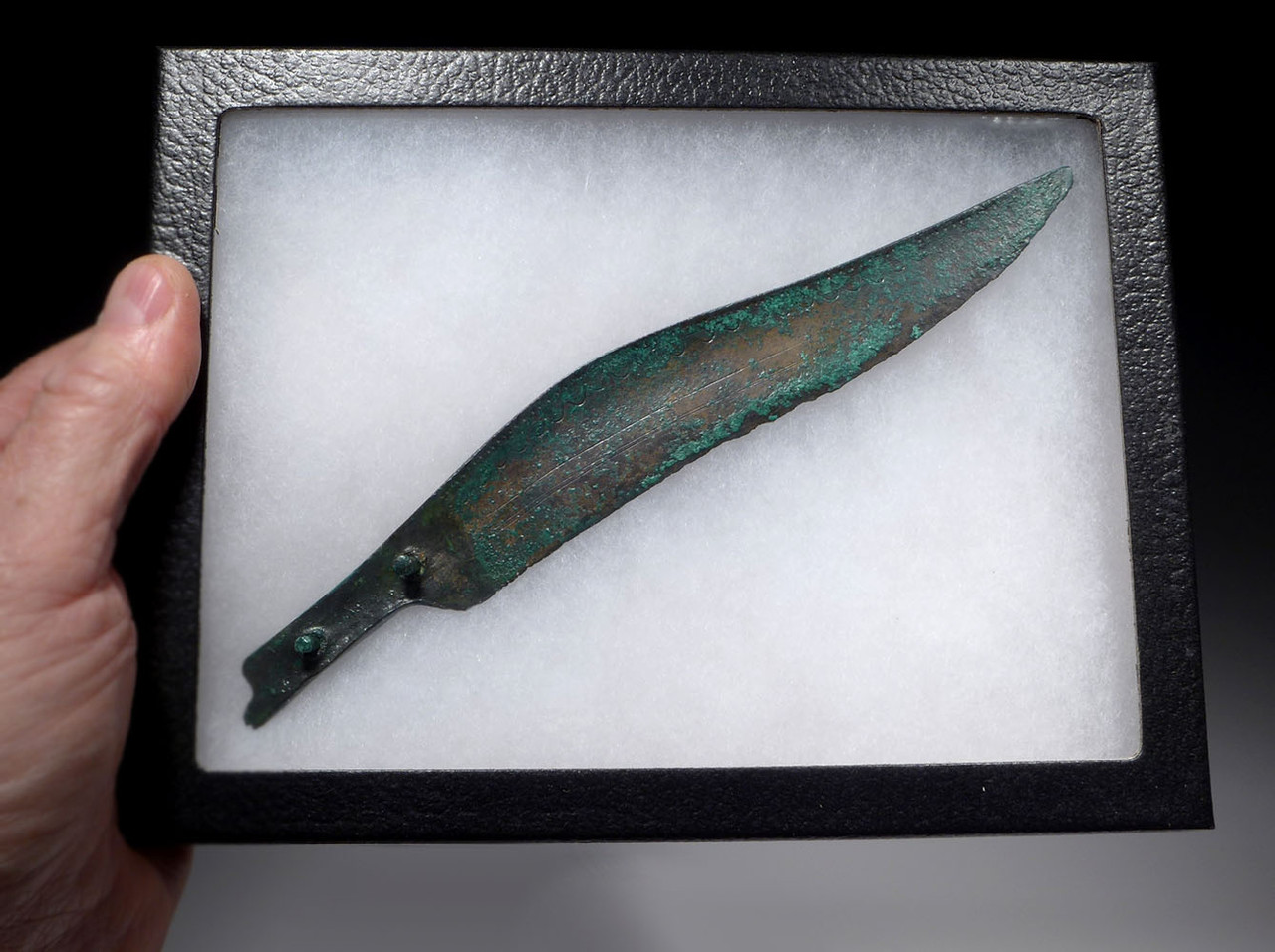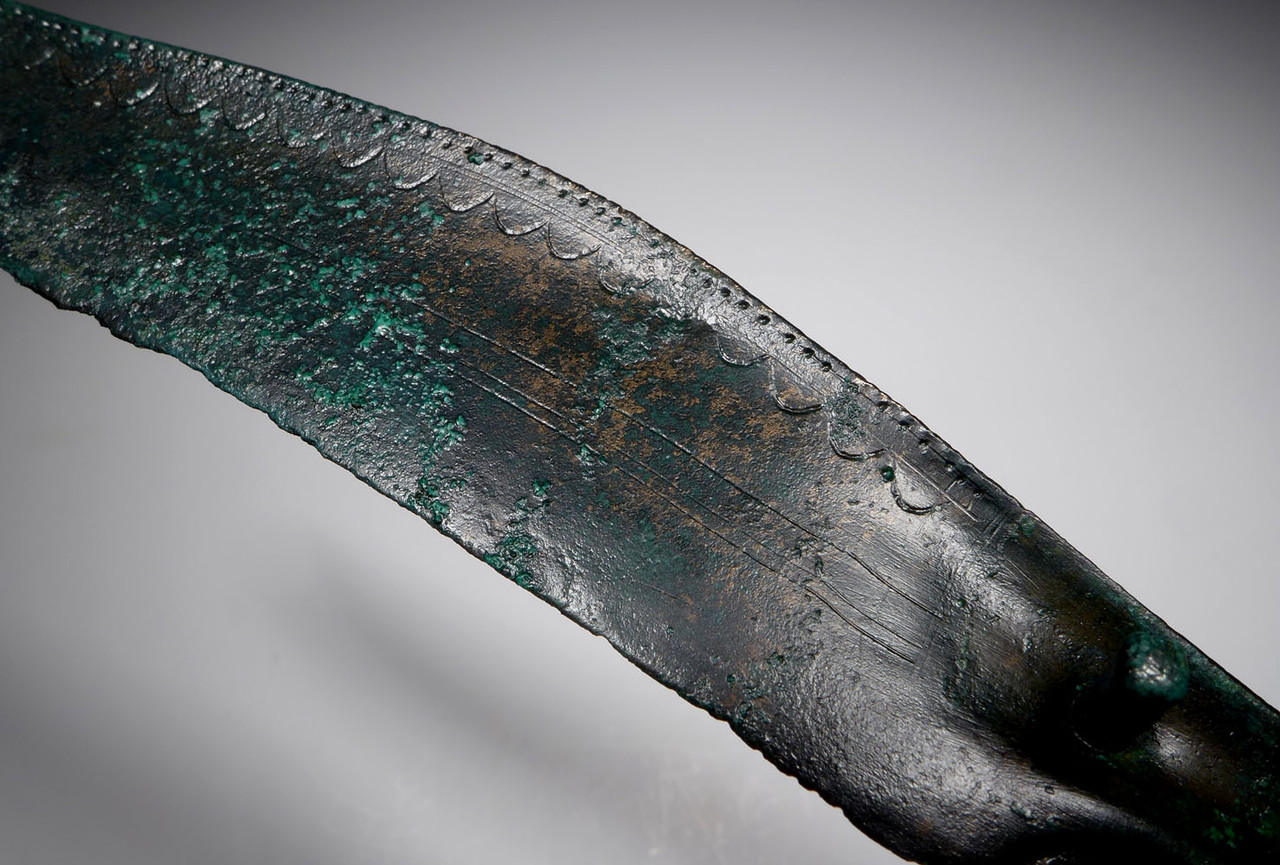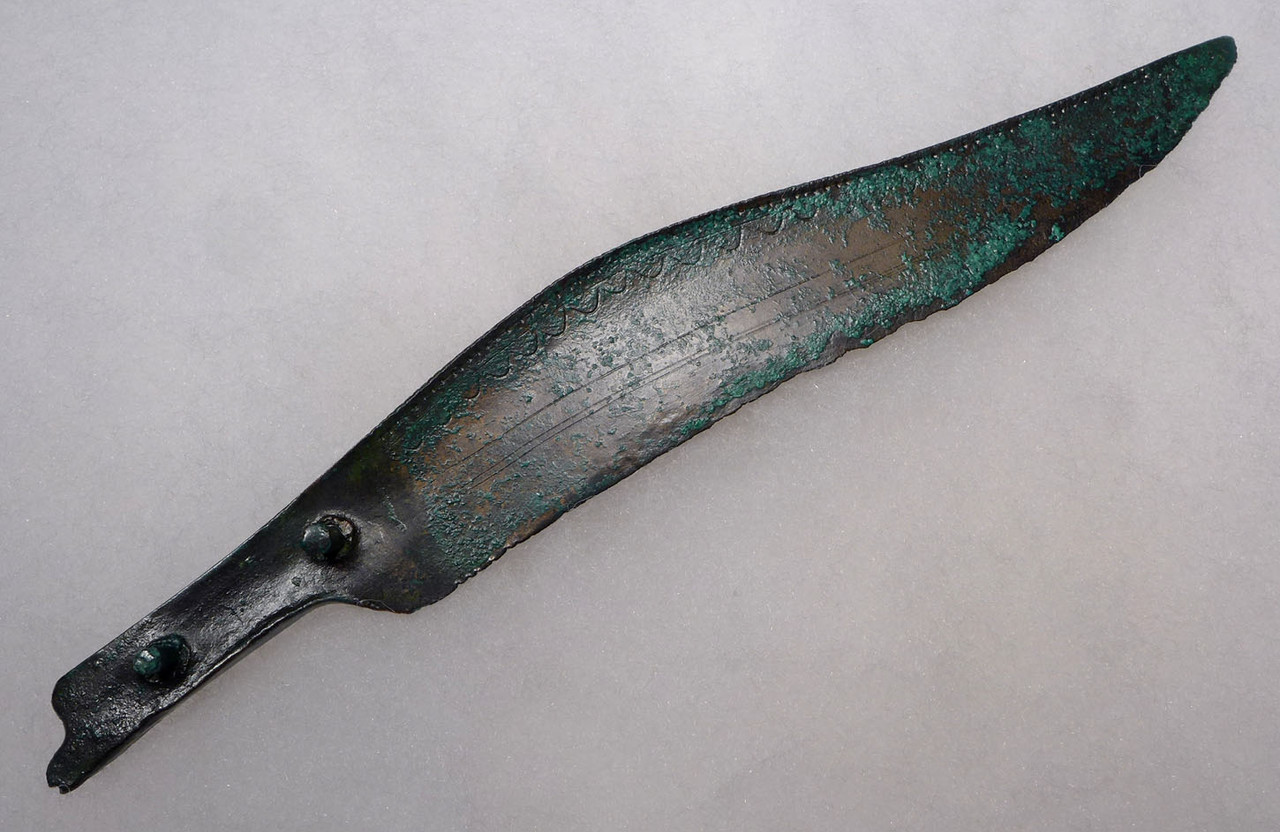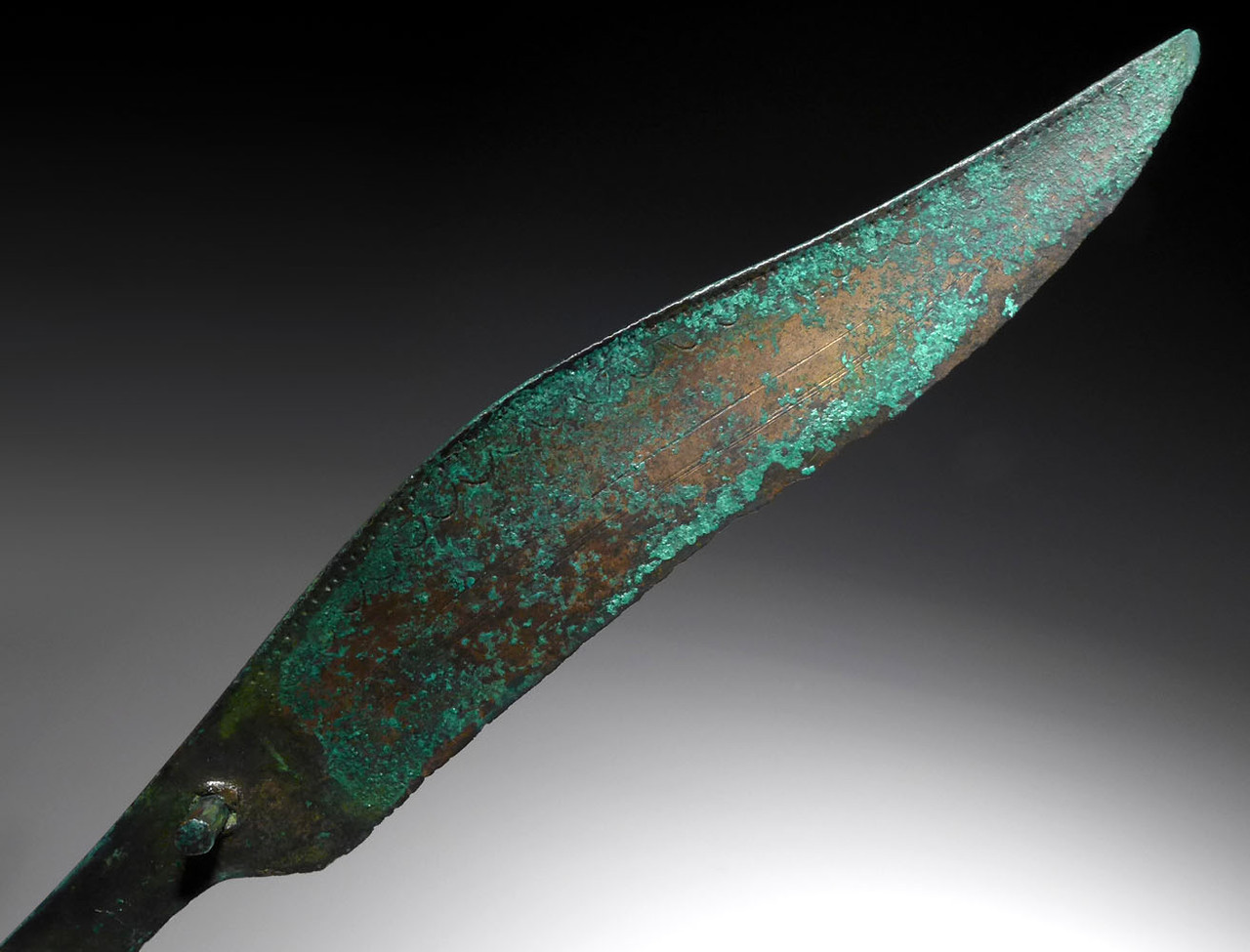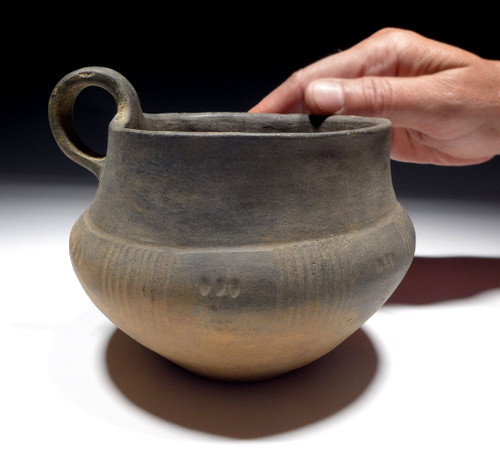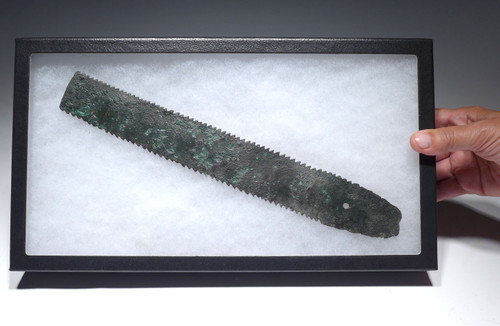Product Description
SEE MORE EUROPEAN BRONZE AGE ARTIFACTS
In all of ancient warfare, the dagger was the most personal of weapons much in the way a treasured pistol is in modern warfare. In the most heated of combat, when it may seem all is lost, the warrior's final fight is with the sidearm. Even in social and ritual gatherings, the dagger was worn when of course, an ancient warrior could afford one. In the Bronze Age, such a weapon was reserved for warriors of noble descent, wealth or military achievement. It was a luxury weapon of prestige. While later in the Iron Age, the dagger became more commonplace, in the Bronze Age, it was truly a status symbol and often embellished with decorative features because of this.
This is an exceptional museum piece! Complete and of the finest preservation, this European Middle Bronze Age dagger shows fantastic engraved decorative features. Not only by the designs on the blade, but the engraved linear embellishments along the back edge really make this a beautiful weapon. The up-swept tip and tapered blade add to the overall aesthetic. The handle has been lost to the elements as it would have been made of wood, ivory or bone. Even the attachment pins of the handle are still attached!
This remarkable bronze dagger displays the highest level of metal-smithing skill in ancient time. Made first by casting, the designs were then hand-hammered and hand engraved to complete the overall masterpiece. A dagger of this complex design required an extraordinary amount of work to make by hand and therefore, would only have been within the reach of the wealthiest class of warriors of the day.
The state of preservation is incredible - the absolute finest possible patina with mineral encrustations of which European Bronze Age antiquities are so prized for. Of all the ancient bronze objects in the world, these European Bronze Age objects display the most spectacular patina when everything is perfect as in this case!
Cleaned and treated in our lab to protect and preserve the integrity of the metal and allow safe handling. Be wary of modern copies that plague the antiquity market today. We subject every artifact we offer for sale to rigorous inspection and authentication in our own museum lab facility.
HISTORY
The Tumulus culture dominated Central Europe during the Middle Bronze Age (c. 1600 to 1200 BC). It was the descendant of the Unetice culture. Its heartland was the area previously occupied by the Unetice culture besides Bavaria and Württemberg. It was succeeded by the Late Bronze Age Urnfield culture. The Tumulus culture was eminently a warrior society, which expanded with new chiefdoms eastward into the Carpathian Basin (up to the river Tisza), and northward into Polish and Central European Únětice territories. The culture's dispersed settlements centred in fortified structures.
As the name implies, the Tumulus culture is distinguished by the practice of burying the dead beneath burial mounds (tumuli or kurgans). The Tumulus culture was prevalent during the Middle Bronze Age. Tumuli have been used elsewhere in Europe from the Stone Age to the Iron Age yet, the term "Tumulus culture" specifically refers to the South German variant of the Bronze Age.
 US DOLLAR
US DOLLAR
 EURO
EURO
 AUSTRALIAN DOLLAR
AUSTRALIAN DOLLAR
 CANADIAN DOLLAR
CANADIAN DOLLAR
 POUND STERLING
POUND STERLING

